The best low light camera will allow take the photographs in the locations with almost no light, while preserving the image as sharp as possible. Dark shooting requires two qualities: eliminating noise and capturing as much light as possible.
For performing well in low light, the cameras are equipped with the following techs and enhancements:
- Sensor size. The bigger is the actual size of the sensor, the more of the area (and, therefore, more light) it catches, providing a base for the dark scene image. Besides, bigger sensor means more detail.
- Aperture. It accounts for the number of photons caught by the sensor. It allows using lower ISO (and control the noise efficiently), or implement faster shutter speed (get less blur).
- Stabilization system. Lets annul the camera motion effect and have as less blur as possible, at low shutter speeds. Can be sensor- or lens-based (the sensor or lens position is varied with the faint motion of the camera).
- ISO range. Higher ISO lets make the image brighter, while the noise grows respectively. That’s why, it’s good to have a wide ISO range and be able to variate the parameters depending on the actual location.
- Digital format. Saving images in a RAW extension helps avoid image processing and keep more detail within.
- Noise reduction. While making the image less blurred, the noise cutting technology makes it lose fine detail.
Picking the best camera for low light, consider the locations, amount of light, and motion. Choose the fitting one!
Low Light Camera Reviews
Nikon D750
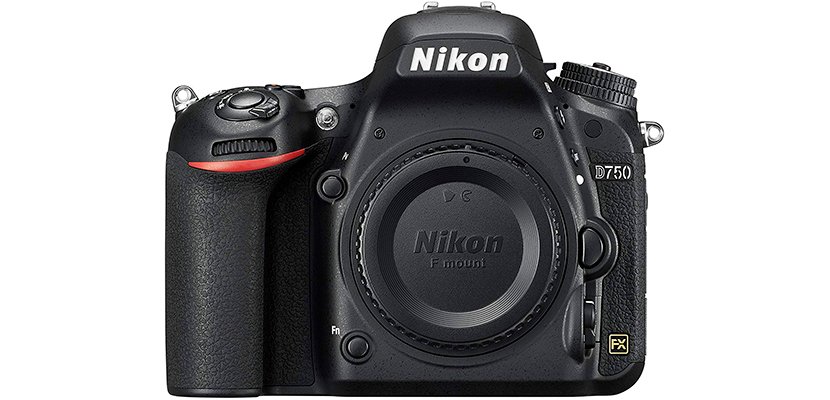
This camera can be called a hybrid of D810 and D610 models. Large sensor and aperture, fast and able processor, considerable ISO variance and professional noise handling makes this model opt for a title of the best low light SLR camera. Still, its wide array of functions, buttons and settings can be confusing for the beginner DSLR photographers, while the supplied manual isn’t comprehensive on functions integration.
The camera incorporates the full-frame 1.3-inch sensor capturing the picture with the vast detail and huge dynamic range. The sensor converts it into the 243 MP providing the realistic and sharp image. The aperture is wide and controllable letting set the optimal amount of brightness required for the particular dim light shooting. There’s a Power Aperture option letting automatically smooth out the iris motion. Correctly set, the camera captures the contrast even in the complete darkness, with little blur.
The shutter speed lets fix the image at 6.5 FPS without affecting the resolution, amount, and sharpness of detail. The colors are preserved saturated, and the tonality is natural in both high- and low-light shooting.
The focus of this Nikon D750 low light camera can be set manually or turned into the automatic mode. In the latter, the sensor captures the 51 concentration points getting the image sharp even in the dim and high-motion circumstances.
ISO can be regulated or set to the auto mode. Its upper limit is 12.800, while the digital extrapolation can extend it to the 51.200. Within the native range, the edges and contrasts are handled consistently throughout. Besides, there is a possibility to use your phone as an LCD screen for the camera.
Pros
- Powerful processor performs fast and enables a variety of settings.
- Efficient contrast handling at shooting fast-moving objects.
- Light weight provides steady camera hold and helps minimizing the motion blur.
- The first DSLR that has a tilting swiveling screen.
Cons
- Auto focus points are concentrated too close around the center.
- High cost comparable to pro-grade cameras.
Video Nikon D750
Panasonic Lumix FZ80 4K
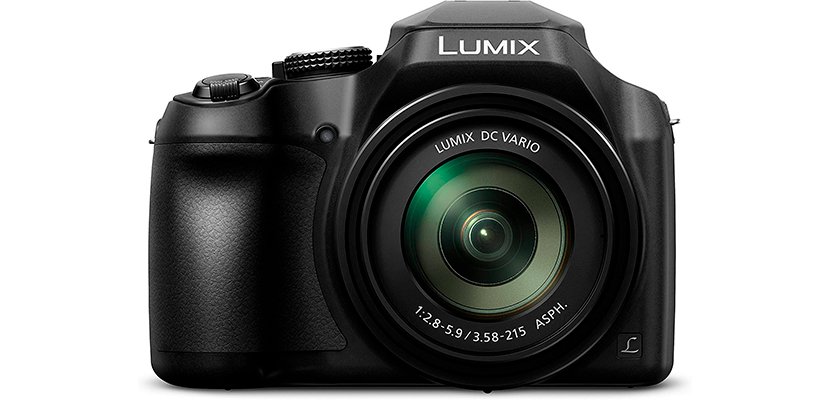
Variable aperture, solid stabilization, and a specific low-light mode let this camera capture high-quality image virtually with any amount of light. As such, being the point-and-shoot, it could even be praised as the perfect dim light camera of the entry-level. Yet, its sensor size doesn’t allow to match the DSLR performance completely, losing at motion-based shooting in focus and sharpness.
The camera features wide aperture range, quite sensitive and responsive. The range varies from 2.8 to 5.9 letting the sensor catch the faintest light present. There’s an opportunity to control the actual exposure in the iA+ mode by scrolling the wheel on a side. The camera fixes several exposures automatically, upon which the pics are processed and the most balanced one is selected.
The shutter speed is quite high reaching 30 FPS and allows catching the minimal light variances, as well as reduce motion noise. The post focus feature allows fixing several focus points and select the one after the image has been taken, which is particularly helpful in shooting in the dark locations.
The enhanced stabilization tech (POWER O.I.S.) lets have minimal camera-caused blur when shooting in dim areas. The photos look sharp and sollid, with a good amount of detail and contrast.
A high-quality viewfinder makes this product a worthy low light camera, as it lets see the image in a high resolution and build the image exactly. There’s also a 4K video stop option letting take the video and cut the optimal still moment out of the playback.
Pros
- A 60X zoom lens that can be zoomed in and out using the toggle button.
- 18.1 megapixels sensor lets capture the finest detail.
- Even lighting, even in the poorly lit locations.
- Small weight and deep grip bring stability when shooting.
Cons
- No ISO regulation.
- Shorted indication of functions on the screen, not easy for beginners.
- Tilt (articulating) screen is missing.
Video Panasonic Lumix FZ80 4K
Canon EOS Rebel T6
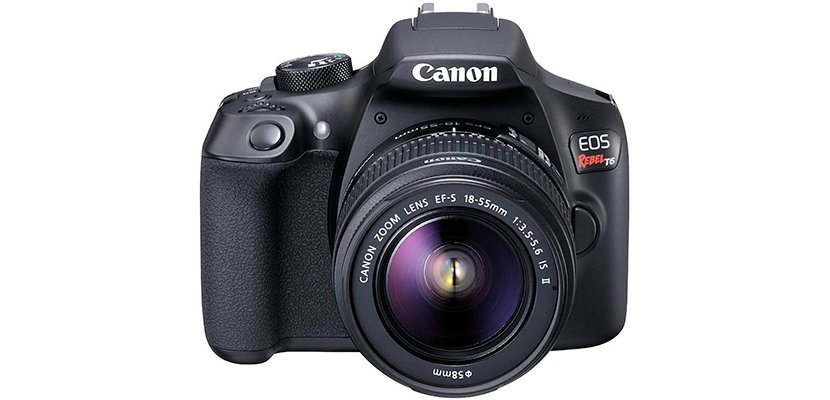
The Canon low light camera can boast a wide ISO range, fast processor, and high-quality viewfinder. However, the Scene Intelligent mode could work better in the dark: while bringing more light into the image, it introduces visible noise to the composition. The camera can be controlled via the phone.
The camera has a big 1-inch sensor that, together with the wide aperture, lets catch as much light as possible and form a good contrast even in the twilight or smoke area. The sensor displays the image into 18 MPs drawing the edges sharply and featuring rich detail.
The camera is driven by the capable DIGIC 4+ processor providing for the fast lag-less operation. The shutter speed isn’t overwhelming; with 3 FPS, it doesn’t deliver the perfect movement fixation. Yet, combined with the smart focus system, it brings little blur in the dynamic low light scenes.
The automatic focus incorporates 9 basic points forming a single focus in the center. This helps a lot when shooting in the dark locations or the ones with the changing light. The Al Servo technology lets build the focus fast and with high precision.
The basic ISO for this model ranges from 100 to 6400 and can be manually controlled bringing high versatility to the low light shooting options. The digital processing lets expand the ISO twice, while bringing some graining into image.
Considering the full DLSR functionality, the camera has rather low pricing. It could be marked as the best camera for night photography, would it feature the image stabilization technology as well.
Pros
- Priority options allow for a precise composition of the image, fiddling between shutter and aperture priority.
- Night Portrait mode brings sharp focus and white balance.
- HD viewfinder provides for quick framing and focusing.
Cons
- No manual focus adjustment.
- Heavy, at least 2 times heavier than competitors.
- Loud focus zooming that can be really annoying.
Video Canon EOS Rebel T6
Nikon D850
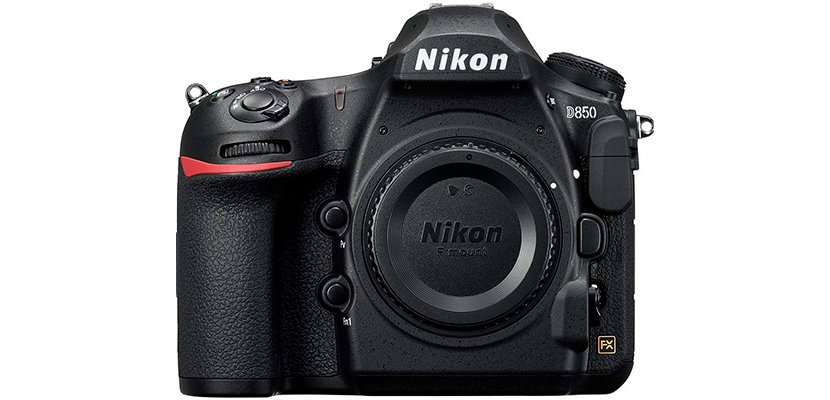
Innovative sensor design, rich dynamic range, full autofocus functionality, and fast speed make this camera opt for the best Nikon for low light position on the list. Still, being rather costly, this model doesn’t feature the inner image stabilization, admitting some noise in particularly difficult circumstances (like shooting in the dark and on the go).
The camera features a large 1,3-inch sensor additionally illuminated from backwards and capturing a large amount of photons. This technology allows skipping the low pass filter use and build the image on as much as 45 megapixels providing a vast amount of detail and contrast.
The Expeed 5 processor brings very fast operation without slightest delay. It allows managing 99 sensors in the AF mode, pinpointing over 150 focal points and creating the sharp vivid image with next to no blur even in the dark night conditions. The shutter works flawlessly enabling the precise lines and contrasts at as much as 30 FPS, while the full image resolution is preserved at 9 FPS.
The camera features a large ISO range starting from 64 and reaching 51.200. The range can be digitally extended both ways, to 32 and 102.400, with some noise presented at extreme points. Throughout the native ISO array, the dynamic range stays top-quality one, with balanced and sharp image. But for a high price, it could definitely become the best night camera on any list.
Pros
- Silent mode hushes all operational sounds and vibration, while preserving the shutter speed high.
- Autofocus control option lets tweak it down to -4 EV to use different lenses in low and combined light.
- Full frame 4K crispy videos.
- A touchscreen on general or tilt screen can be used to focus.
Cons
- Requires expensive top-quality lenses and high-speed SD cards.
- iOS app is cumbersome and takes time to set / control the camera wirelessly.
Video Nikon D850
Olympus OM-D E-M10
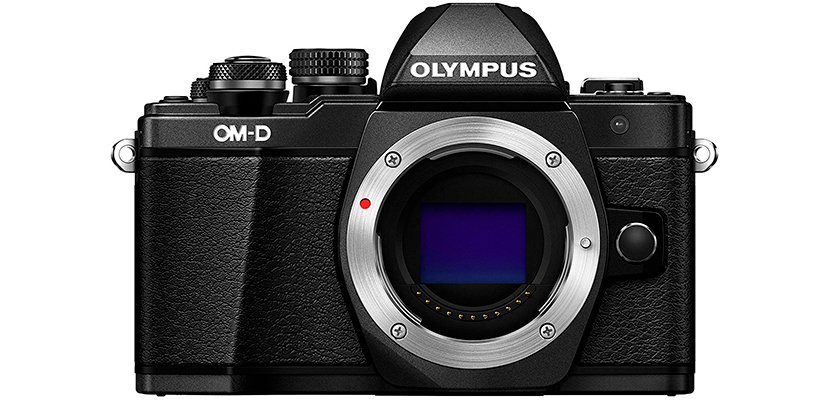
Fast shutter operation, solid built-in stabilization technology, and the advanced viewfinder make this camera a worthy entry to the best low light camera list. Meanwhile, the small sensor and somewhat slow autofocusing might become an issue for dynamic shooting.
The 0.85-inch sensor used in this compact camera brings good native contrast and vast dynamic range. It puts a picture on 16 megapixels providing a lot of detail and smooth transitions. While it might be insufficient in complete darkness, the camera catches and handles light well when it’s present, even in changing light conditions.
The aperture settings are versatile letting select from F2.8 to F11 and thus, getting the most exposure in the low light. The camera is capable of producing very bright images, while the appropriate shutter speed regulation can lead to an accurate and contrast picture even in a poorly lit location. The shutter speed can be chosen from a vast range and adjusted to any particular situation, the upper limit being 8.5 FPS.
This camera also features an advanced viewfinder representing the sharp realistic preview. The OLED screen reflects the image on more than 2 mln dots and provides the HDR quality. It’s highly responsive and delivers 0.62x image magnification without losing in quality and contrast.
The enhanced stabilization system provides the precise and natural images in the dusk. It’s based on 5 axis technology and efficiently reduces the blur originating from the camera tilt. This feature alone could highlight the Olympus OM-D E-M10 as the best camera for low light photography among non-SLR cameras.
Pros
- RAW-format supported.
- Weighing less than a pound, the camera is easy to manage at continuous shooting.
- Camera settings are easy to tweak in real-time on the viewfinder.
- A screen can be rotated out.
Cons
- Autofocus might fail on highly dynamic objects.
- Battery dies quickly.
- No locking mechanism on dials, they can move randomly.
Sony Alpha a7S
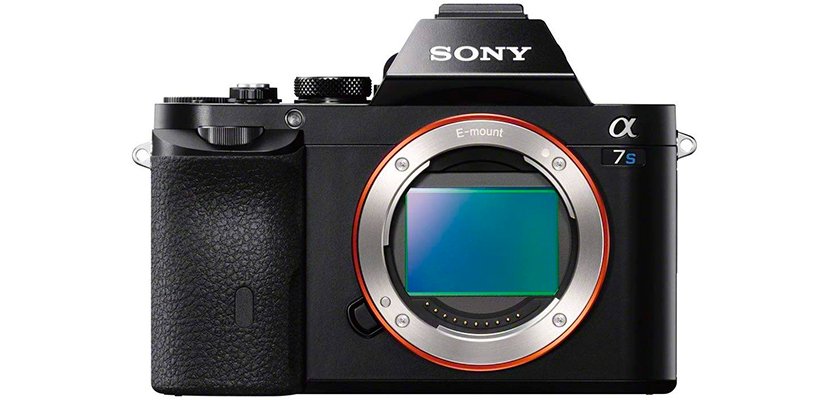
Full-frame sensor, high contrast, vast dynamic range, and ISO options make the a7S low light a worthy competitor to the solid DSLR models. However, the absence of the inner stabilization requires experience for reaching the least noise in pictures.
With 1.37-inch diameter, the sensor lets capture the contrast images even in the mixed lighting and next to complete darkness. It transfers the picture into the digital base of 12.2 MP. The BIONZ X processor delivers the flash-like performance with zero lag and delivers the extremely wide dynamic range. It lets the sensor work efficiently in the low light and create a realistic high-contrast image. The pixel is “read” directly, without preliminary binning, providing the high-quality video in both bright and low light. The shadows and bright spots are pictured precisely and lively, with smooth transitions.
The focus can be taken manually or set to the automatic mode. With over 150 focal points, it allows capturing the high-quality images without blur in twilight and in the dusk. The autofocus works well even in the poor light (up to -4 EV), outlining the objects with precision and high contrast.
The ISO range on this camera goes top high from 100 to over 100.000 in the native performance, and up to 409.600 expanded sensitivity. This lets shooting in the full darkness and still catch the slightest reflection present on the object’s surface. Though the price is high, this Sony low light camera can definitely provide high value for its cost.
Pros
- Advanced RGB filter and light gathering technology lets use the high ISO without side effects.
- Clean noise-free photos without a flash.
- Premium white balance and exposure.
Cons
- Autofocus takes time to concentrate.
- Some functions (e.g. time lapse shooting) are available through the app only.
Canon SLR EOS 80D
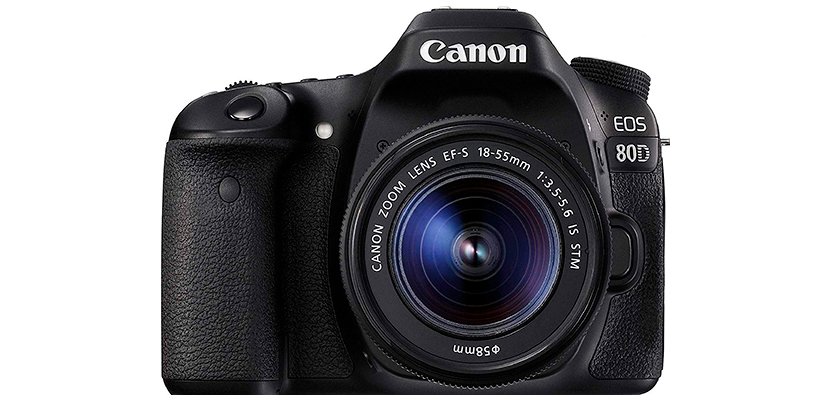
Versatile functionality for different light conditions, solid construction supporting high speed performance let call this model the best low light digital camera. Still, the inability for the viewfinder and the touchscreen to be active at the same time might become a nuisance when changing the settings.
The 1.06-inch sensor delivers high contrast and precision together with the vast color gamut. It shapes a consistent highly detailed image on 24.2 megapixels reflecting each tiny fragment sharply and in a natural way. The sensor is backed up by the wide circular aperture allowing a lot of light at F/2, while providing a range of choices up to F/8 without losing in picture quality.
The camera works fast and lagless and is quite responsive. It implements the Digis 6 processor enabling fast shutter work and immediate high-quality digitalization, as well as fast touchscreen display. The smart viewfinder is based on SLR technology ensuring almost full coverage and “get-what-you-see” operation.
The focus can be switched between manual and auto mode. The latter offers efficient object highlighting enabling 45 focal points powered by cross-type sensors. There are four settings of AF functioning, while the low light performance stays high-class up to EV -3.
The ISO varies from 100 to 16000 and lets shoot at very little light. The solid stabilization supports sharp outlines and natural contrasts even at high ISO numbers almost eliminating noise from images. The enhanced Canon 80D low light performance allows shooting lifelike pictures with any amount of light present.
Pros
- Focus racking feature is handy when recording videos in low light.
- 7 FPS speed enables capturing the slightest light variance and is optimal for moving objects.
- Fast focusing in dim light.
Cons
- Rather bulk and heavy.
- Video is limited to 1080p (not 4K).
Sony a9
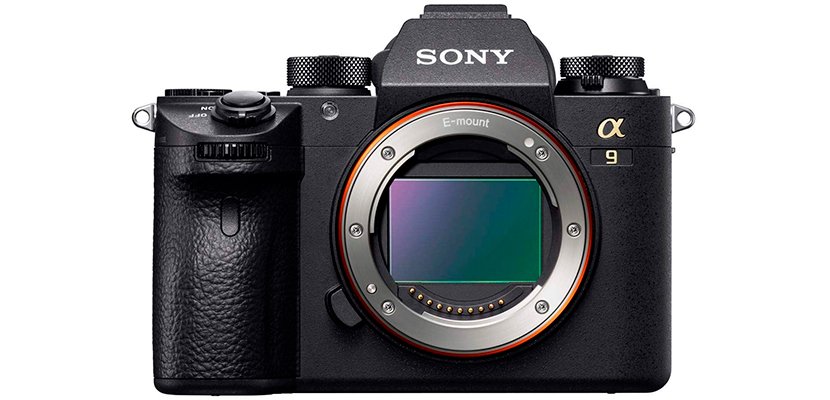
The top-quality build and functionality, premium fast operation and image sharpness of this camera make it opt for the title of the best night time camera on any chart. Still, considering the high price of this model, the dynamic range in the shades could be wider and the colors more saturated.
The camera is equipped with 1.37-inch CMOS sensor having the stock memory. Boasting the backside illumination and powered by the capable BIONZ X processor, it imprints the picture on 24.2 MPs with rich detail and vivid colors. The overall image is smooth and balanced. The readout is instantaneous and very accurate.
The aperture settings are vast, while depending on the lens used. They can vary from F1.8 to F11 enabling to choose the fitting measure for any exposition.
The electronic shutter used on this camera allows capture the movement as fast as 20 FPS. The operation is silent and instantaneous, with no vibration present. The distortion preventing technology implemented provides for even balanced composition in dim or striped lighting (sunlight-and-shade) without side effects.
The Sony a9 low light capabilities are enhanced by the solid image stabilization. Combined with the native ISO ranging from 100 to 25600, it delivers the noise-free, fully-focused pictures in the dark and dim conditions.
Pros
- Vast and fast AF covering the most of the area provides for highly detailed and sharp image.
- Viewfinder works flawlessly picturing the image precisely and allowing the settings to be seen.
- Lightweight and ergonomic, ensures good grip.
Cons
- Banding effect on light is sometimes present at high shutter speed.
- Lens release button is close to the right hand grip and can be activated unintentionally.
Buyer’s Guide
Things You Should Consider Before Buying a Low Light Camera
Sensor
Being the central part of a camera, the bigger the sensor is, the more light it’s able to accumulate and more information to work out. The sensor’s surface gathers the photons and converts the data received into a digital signal. Therefore, the more the physical size of the sensor is, the more capable will be the low light camera.
Besides, bigger images also account for less noise in the image. The more light waves hit the sensor, the more detailed is the picture. The more contrast there is, the less is the blur, and the sharper the image.
The sensors used in the modern cameras vary; however, they can be grouped to three typical sizes:
- Four-thirds — the smallest one;
- APS-C — the medium size;
- Full-frame — the largest and most expensive.
Another sensor parameter to be considered is the number of pixels. More pixels usually means more detail and better contrast. Yet, fewer pixels reflect the image no less efficiently due to bigger amount of photons caught per pixel.
Which lens do you need?
Sensor is set, the next parameter to consider is the lens. There are two general types of lenses in terms of functionality:
- Prime. These lenses have stable “shot” length, while featuring fewer elements and providing more balance, wider dynamic range, and sharper image.
- Zoom. Lenses with changeable shot distance. While modern zoom lenses provide a high-quality picture, they tend to blur around the corners and other unwelcome effects, which could be highlighted in the poor lighting.
Usually, the prime lenses are chosen by the pros, since they can generate more detail and the ultimate sharpness of the image. Besides, the prime lens is usually free of the vignetting effect and chromatic aberration usual in the zoom lens when used in changing light or dark light conditions.
Another factor to consider is an aperture. The good low light camera must enable lower F-stop number providing for a physically larger aperture and more light getting to the sensor. The F-stop number below 2.2 is usually considered fitting for high-quality low light photography, while the 0.95 is the lowest number (corresponding to the widest aperture) the lens can currently produce. Still, other factors matter as well.
Lower F-number means higher shutter speed available, and the latter stands for less blur in the final image. Wider aperture also means smaller ISO parameter can be selected, which also brings more detail and natural contrast into the picture.
You need to make settings
The modern cameras feature multiple settings to change the way they fix the image. The most preferable is the manual mode. While tweaking your camera to perform in a low light, pay attention to the following options:
- Aperture. Wider means catching more light, while fewer f-stops account for sharper image with more depth.
- Shutter speed. Quicker is better, while slower shutter work will let the sensor capture more light. Tune the shutter speed to match or exceed the focal length used.
- ISO. Lower is better for the image accuracy, while higher ISO means the sensor sensitivity increase and catches the slightest light present.
- White balance. Depending on the actual location and light, you might need different amount of whites to be present in the final image.
- Focus. While modern nice shot cameras feature an advanced autofocusing covering a large area and working at EV -4, the manual focusing might be more efficient, especially in terms of the warm bokeh.
- File format. While JPEG is handy in terms of file transmission, the RAW format lets preserve the most of the image quality and adjust the white balance and some other parameters using the editing software.

